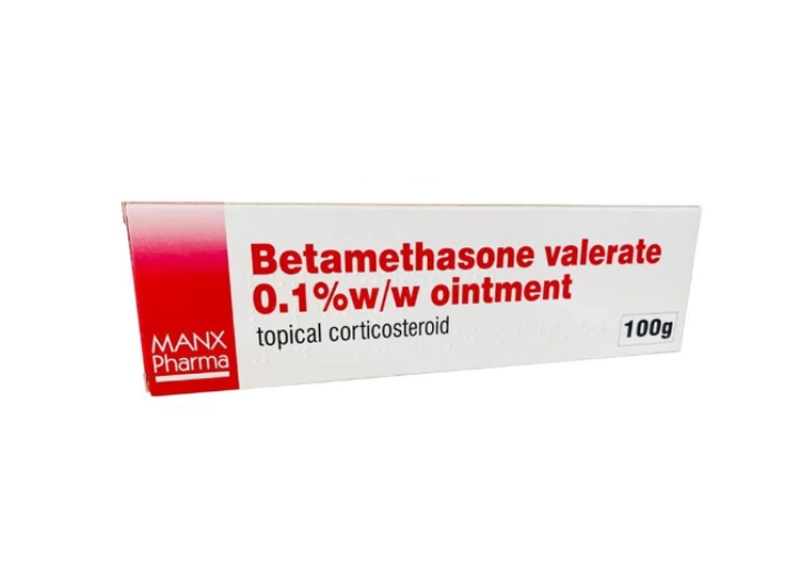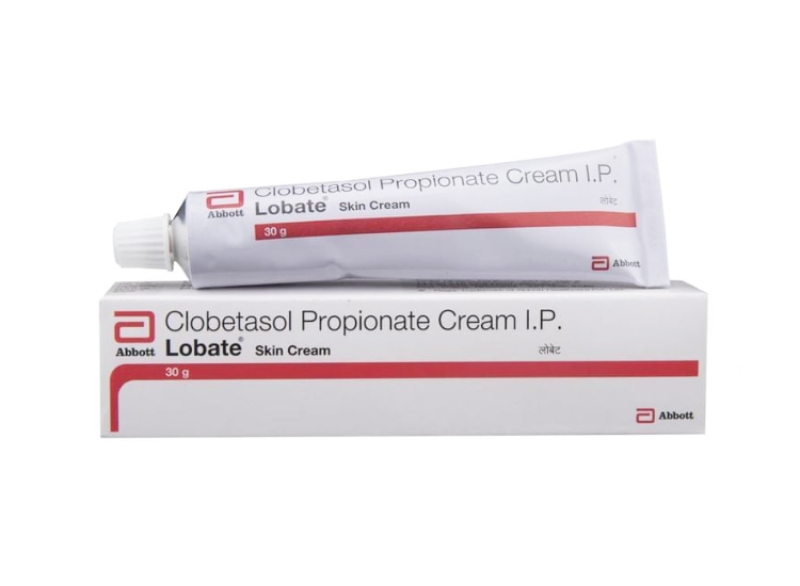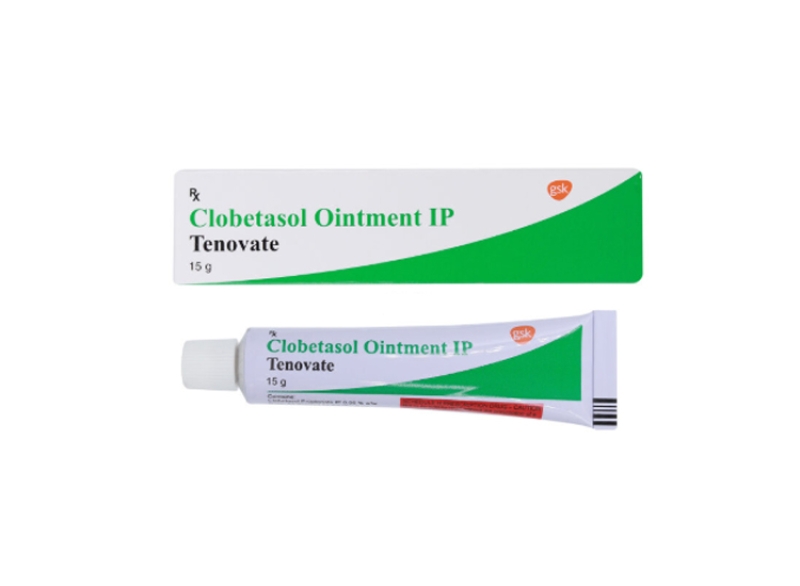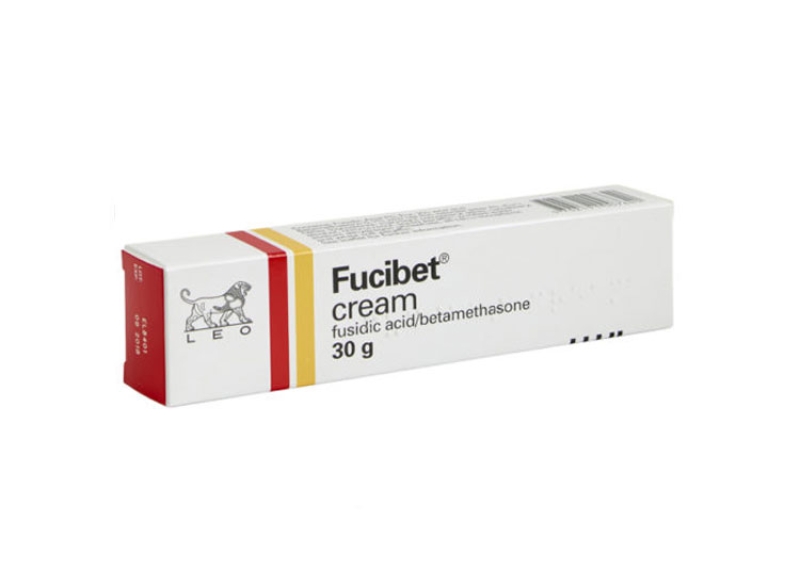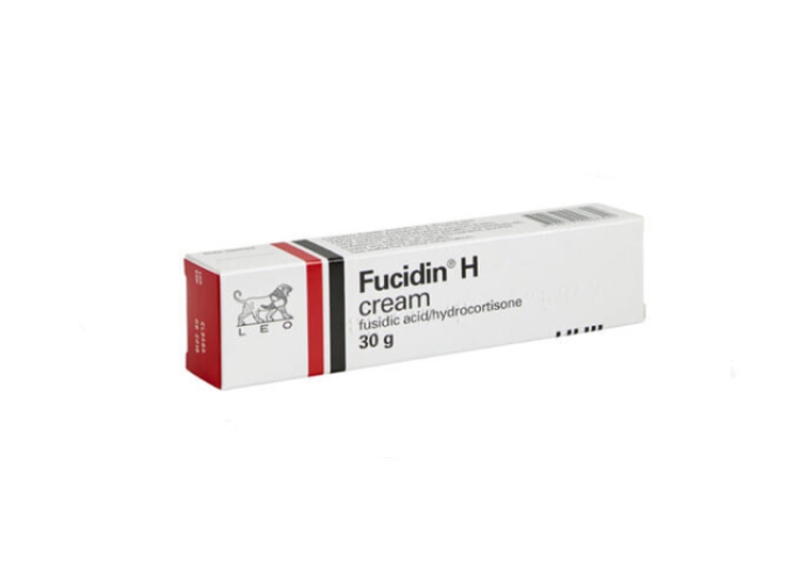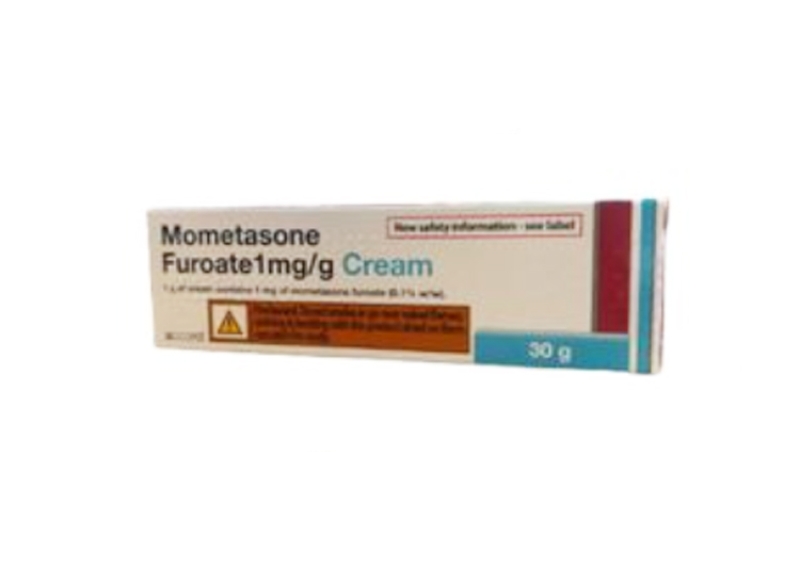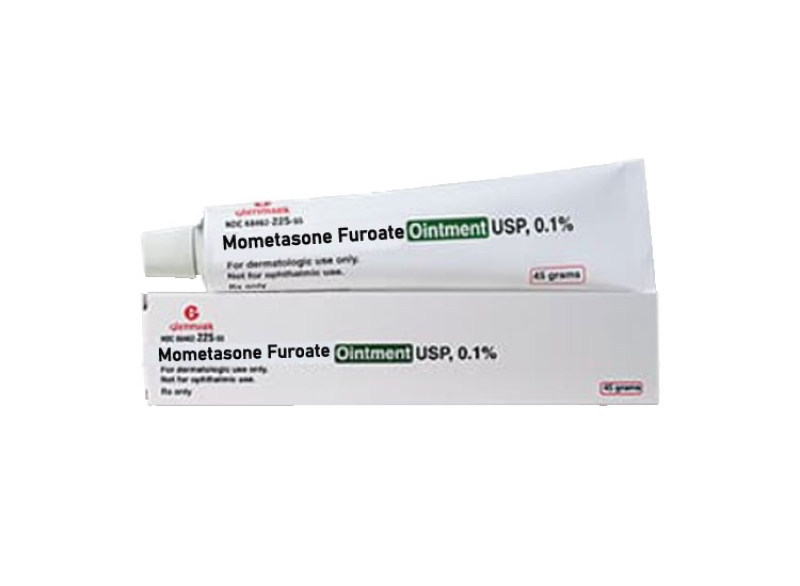How to Order ? Simple.
-

1.
Select Treatment
Choose from our treatment options or speak to the in-store pharmacist for advice
-

2.
Complete Medical Questionnaire
Complete our free online medical consultation to be reviewed by our Clinical Team
-

3.
Collect Medication from Local Pharmacy
We will notify you when your medication is ready for collection
Advice for Eczema
Eczema, also known as atopic dermatitis, is an increasingly common skin condition that affects approximately 10% of UK adults. It is a common, long-term condition that causes the skin to become dry, itchy, and inflamed. The inflammation occurs when the body is exposed to a generally harmless allergen which the immune system mistakes for a harmful substance. The immune system then attacks the area of the skin causing inflammation.
Eczema can affect any part of the body but it is common to have eczema on the hands, fingers, the back of the knees, and the inside of the elbows. It is possible to have eczema on the face, eyelids, and other parts of the body including the scalp. It is more common in children than in adults.
It can affect areas of skin ranging from small patches to being more widespread, often appearing as red inflammation on light skin, and purple or grey areas on darker skin. It is a chronic skin condition that often flares up periodically and then improves with treatment.
Spontaneous flare-ups are usually the result of an external trigger, the most common being: soaps, pollens, animal dander, overheating, house-dust mites, stress and harsh clothing. In most cases of eczema, there will be a family history of the condition, or a history of another, similar atopic condition (such as hayfever or asthma).
The skin on our bodies is designed to provide a protective barrier against irritants and infections. It consists of three layers; a thin outer layer (epidermis), an elastic middle layer (dermis) and a fatty inner layer (hypodermis). All three layers contain skin cells, water and fats that help maintain and protect the condition of the skin.
Someone who suffers with eczema may not produce sufficient fats and oils to properly maintain these skin layers. This will also reduce the skin’s ability to retain water, causing the skin cells to become dry and cracked. This dryness can lead to tiny gaps opening up in the skin, making it easier for irritants and bacteria to penetrate its surface. It's these irritants that cause the skin to become damaged, red and inflamed. This can lead to the sufferer scratching and splitting the skin open, causing it to bleed and leaving the wound open to infection.
Whilst eczema tends to develop in children in their first few years of life, it's also possible to develop it for the first time during adulthood. A predisposition to eczema can be passed genetically, although the condition is not infectious.
In most cases eczema can be easily diagnosed by your GP or pharmacist through a visual examination of the skin coupled with questions about your symptoms. Mainly they will want to know when the symptoms first appeared and what substances you have been exposed to. They will likely ask questions about your occupation and lifestyle in an attempt to identify what triggers or factors are causing your symptoms. Most common cases of eczema are not serious and symptoms can be kept under control.
If your GP is unable to diagnose eczema, they may refer you to a dermatologist. Seeing a dermatologist may also be necessary if your eczema has been successfully diagnosed but you are not responding to conventional treatment.
When looking at the symptoms of eczema, it is important to note that eczema is different for everyone. Eczema can show on any area of the body at different times, but most commonly affects the insides of the elbows and the backs of the knees, the hands, the face and the scalp. The most common symptom is itchy skin, which can get worse if you continue to scratch the area.
Eczema is a skin condition that makes your skin feel itchy, dry, and irritated. When you have anflare up of eczema, you may experience some or all of these symptoms:
- Dry skin patches
- Scaly, rough patches of skin
- Redness
- Itchiness
- Inflammation
- Discolored skin
- Cracked skin
- Crusting or oozing
- Dryness
- Thickened skin
Sometimes, eczema can lead to bacterial skin infections because the skin is cracked and broken. The skin might start to weep, become sore and swollen, and may form a yellow crust.Some people can experience scalp eczema which can cause a dry, itchy, or weepy scalp.
The exact cause of eczema is not known, however, it is believed that genetic predisposition can play a predeterministic role in developing the condition. Eczema can flare up in response to physical triggers such as irritants, foods, allergies and changes to weather temperature and humidity. Furthermore, other triggers such as high stress and hormonal changes are believed to trigger eczema flare ups.
It is thought that a combination of factors cause eczema. The immune system, genes, environmental factors, and other factors all play a role in the condition. People with a family history of asthma, hay fever, and/or eczema are more likely to develop eczema themselves.
Many people with eczema have certain things that can trigger their symptoms and cause them to worsen or flare up. These triggers can vary from person to person and include:
- Dietary triggers - e.g. milk, soy, egg, peanut, wheat
- Weather changes - some people find their symptoms improve in the summer and worsen in the winter
- Allergens - e.g. pollen, dust mites, pet fur Irritants
- Materials that come into contact with the skin, like fabrics
- Irritants like perfumed soaps, detergents, and bubble bath
- Hormonal changes such as pregnancy or periods
While there is no cure for eczema, it can be effectively treated to help minimise the intensity of the symptoms and frequency of flare ups. Self care techniques such as avoiding scratching and itching, emollients (moisturising creams) and topical corticosteroids are all effective treatment options.
Whilst there's no magic treatment option to cure eczema for good, there are numerous methods of managing the symptoms that can help to relieve the discomfort. The best eczema cream or treatment will vary from person to person. Some people can manage their eczema with just emollients, whilst others find topical steroids helpful for severe flare-ups.
There are varying types and strengths of topical corticosteroids, the appropriate selection will be made based on the severity of symptoms and where on the body they are located. Weaker corticosteroids are usually recommended for cases of mild eczema, or for the more sensitive areas of the body. A stronger corticosteroid will likely be recommended for use on the palms of the hands, knuckles or the soles of the feet and areas where the skin is thicker. If presenting with severe eczema or dermatitis, a strong corticosteroid may be prescribed for short-term use only.
At Pharmacinta, we have the following treatment available to manage flare ups:
Topical Steroids - These anti-inflammatory treatments reduce redness, itchiness, dryness and swelling when applied to the affected area. They range from mildly potent to very potent. Depending on preference, these come in cream or ointment form. Since the ointment is more oil-based, it will take longer to be completely absorbed, meaning it’s great for eczema relief over longer periods. Betamethasone, Mometasone and Cloebtasol cream and ointment are available. We also have Betamethasone scalp application for scalp eczema.
Corticosteroids work by stopping skin cells from releasing chemicals that cause inflammation and also by constricting blood vessels in the skin.Topical corticosteroids can be effective but can cause severe side effects if applied to large areas of skin or overused. For this reason, topical corticosteroids are used for short periods and should be applied carefully (e.g. only apply a thin layer). People are often advised to use fingertip units when applying the cream.
Topical Steroid with Antibiotics - Some topical steroid medicines also contain an antibiotic and can be used to treat infected eczema. Examples of combined topical corticosteroids include Fucidin H and Fucibet.
Emollients
Emollients are products used to moisturise the skin and keep it hydrated. They are important in the management of eczema and should be used often and liberally to reduce the frequency of flare-ups. Some of the emollients can be used as a substitute for soaps to help cleanse the body in the shower.
There are a variety of different emollients available and many different forms exist such as creams, eczema ointments, lotions, and washes. Common ingredients in emollients include colloidal oatmeal and hyaluronic acid. Examples of emollients include: Cetraben, Hydromol, E45, Dermol, Aveeno etc.
Some emollients have a combination of emollient and antimicrobial agents. Dermol 500 is a highly effective antimicrobial emollient known to provide rapid relief from eczema-related itchiness, that can be used as both a moisturiser and soap replacement. Doublebase Gel is a popular alternative suitable for all skin, and contains isopropyl myristate and liquid paraffin as the active ingredients to treat dry or chapped skin.
Antihistamines
For severe itching, antihistamines such as Fexoffnadine, Cetirizine and Chlorphenamine are effective solutions.
Bandages
Whilst eczema can cause the urge to scratch your skin in an attempt to relieve the itching, this will damage the skin often leading to more eczema. Keep your skin covered with light clothing and your nails cut short to reduce the damage from habitual scratching. For problematic areas, you could consider a bandage to allow uninterrupted healing underneath.
Avoiding Triggers
Some foods, namely eggs and cow's milk, can sometimes trigger eczema symptoms, so try avoiding these for a period of time to see if you notice any improvement to your skin.Improve your diet by ensuring the foods you eat are from a variety of different groups. Cut down on saturated fats and sugar, and up your wholegrain starchy foods and protein.
Lifestyle Changes
Get a full night's sleep so your body has ample time to rest and renew, since sleep increases cell regeneration which includes your skin. Exercising regularly will increase blood flow around your body, giving your skin and natural, healthy glow.
Drink six to eight glasses of water per day to stay hydrated, as this is key to healthy skin. Drinking alcohol can cause dehydration, so be conscious of having too many alcoholic drinks.
Smoking causes your skin to lose elasticity at an increased rate, so try to quit or cut down if you can.
Frequently Asked Questions
In eczema, the skin is often inflamed and can be weepy. In lighter skin, eczema might become red. In darker skin, the inflamed skin might be grey, dark brown, or purple.
The name �eczema� is given to a group of similar skin conditions which lead to dryness and irritation. There are a number of different forms: Atopic eczema � the most common type; though more common in children, it also affects adults Discoid eczema � occurs in circular patches on the surface of the skin Contact dermatitis � a reaction following contact of the skin with certain substance Varicose eczema � an eczema affecting the lower legs, resulting from poor blood flow Seborrhoeic eczema � characterised by discoloured, scaly patches on the nose, ears or scalp Dyshidrotic eczema � small blisters on the palms
Eczema is not contagious.
People within a family often have similar susceptibilities to some skin conditions, including eczema. Eczema tends to develop concurrently with other hereditary conditions like hay fever and asthma.
A doctor will usually be able to discern whether your skin condition is eczema or another similar condition. If normal eczema treatment does not provide relief, you may be referred to a dermatologist to identify the root cause of the condition.
Twenty percent of British children will develop atopic eczema to some extent. In the majority of cases, eczema will first develop while the child is a baby or toddler, and often in infancy. Around half of children with eczema will see significant improvement by the age of eleven, and many will see the condition clear entirely by the time they reach adulthood. In some cases, however, eczema will remain through adulthood, or otherwise appear for the first time when the individual is an adult.
As atopic eczema is a chronic condition, there is no cure. However, medication is effective at combating symptoms, and most children with eczema will find that their condition improves significantly with age.
Stress is thought to be one trigger factor that can exacerbate eczema or cause flares. Eczema can also cause people to feel stressed about their symptoms.
Scarring from eczema is a common problem, as the intense itching can lead to scratching of the skin surface that results in bleeding and cracking. The scars can range in colour and size, depending on their severity. One of the best ways to prevent scarring is not to scratch. But this can be hard.
There is no �wonder food� that will totally cure you of the symptoms of dermatitis, but research has shown that certain changes to the diet can have a beneficial effect. Cutting out lactose � as found in cow�s milk � is one of the most common suggestions for eczema sufferers, and it is recommended that you try switching to a vegetable milk alternative to see whether this has any effect on your condition. Others have also suggested experimenting with cutting out foods such as gluten, eggs, soy, nuts, sugar and strong citrus fruits, to see if your condition could be partially related to an intolerance.
Being around things that you are already allergic to can certainly exacerbate the condition considerably, if you are already experiencing eczema symptoms. This is because your body�s immune system is already in overdrive trying to fight off the irritant that�s causing the eczema in the first place.
Typically, emollients are used as often as needed, whereas topical corticosteroids are used during flare-ups, 1 to 2 times daily for 7 days maximum. Emollients are used all over the body, whereas topical corticosteroids should only be used on the area of the flare-up, and never on the face.
Emollients are used during the day to provide moisture when you need it most. You can use them whenever your skin feels tight or dry, especially after showering, swimming, or exercising. Emollients are most effective after bathing or washing your hands, as your skin needs the most moisture after this.
Topical corticosteroids are usually prescribed to treat an eczema flare-up. You will then apply it for a short amount of time (up to 7 days) to reduce the flare-up. Try to leave 8 to 12 hours between doses.
Some steroid creams can be bought over the counter at pharmacies. This includes Hydrocortisone 1% and Eumovate 0.05% but they can only be purchased after receiving medical advice from a pharmacist. Other corticosteroid creams are prescription-only medicines.
Yes, topical hydrocortisone is a type of steroid cream called a corticosteroid. This is different from anabolic steroids.
Using topical hydrocortisone every day for a short period of time is sometimes advised. It should not be used every day in the long term because this can cause irreversible side effects. You should only use it for as long as advised by your doctor.
Not without the recommendation or a prescription from a doctor. This is because Hydrocortisone reduces the body�s immune response in the area it is applied. Putting it on your face can make some skin conditions such as acne, rosacea and impetigo worse.
A number of steroid creams and ointments are available and some are more potent than others. Eumovate is classified as a moderately potent topical steroid.
You may notice your eczema improves after a few days of using Eumovate. You should use it for as long as your doctor has told you to.
Yes, betamethasone is the active ingredient in Betnovate. This is known as a corticosteroid and is not the same thing as an anabolic steroid.
Topical hydrocortisone is considered to be a mild steroid. Betamethasone 0.1% is considered a potent steroid, meaning it is stronger than hydrocortisone. Another type of hydrocortisone, called hydrocortisone butyrate, can also be prescribed. This is considered a potent steroid.
Fucibet is a steroid cream because it contains the steroid ingredient betamethasone valerate. This is a common steroid used to treat inflammatory skin conditions like eczema and psoriasis.
Fucibet contains two ingredients: fusidic acid and betamethasone. Fucidin only contains the antibiotic fusidic acid. It does not contain a steroid ingredient.
Your doctor can prescribe Fucibet for use on the face if they think it is necessary. However, if it has been prescribed for your face, you must take care when applying the cream. If the cream gets in the eyes, it can lead to glaucoma as a side effect.
You should start to notice the affected skin improve within a few days of using Fucidin H. Signs that the skin is improving may include less redness, less weeping, and less inflammation.
Fucidin H cream contains hydrocortisone and fusidic acid. Fucidin only contains fusidic acid, meaning it is an antibiotic cream but not a steroid cream.
Yes, Fucidin H contains the active ingredient fusidic acid which is an antibiotic. This destroys bacteria growth and helps to treat infections.
Dermatologists will review your current medication and offer support to ensure that they are being used correctly. Further remedies they might offer include: Topical calcineurin inhibitors � these are ointments that will suppress your immune system, which include tacrolimus and pimecrolimus; Topical corticosteroids; Wet wraps or bandages; Phototherapy � ultraviolet light which will combat further inflammation; Immunosuppressants � tablets that work to suppress the immune system, which include ciclosporin, azathioprine and methotrexate; Alitretinoin � medicine specifically for adults to treat severe eczema of the hands
Terminology is important in treating skin conditions, so here are the differences between the types of topical products: A solution is a liquid with a base of water or alcohol. They are thin and easy to apply, but can cause further dryness for some people. Lotions are slightly thicker than solutions. These can be used for large and/or hairy regions of skin. Creams are thicker than lotions. They are used for smaller areas of skin, especially when a region is weeping. An ointment is a product with high oil content. They can be greasy, and are used to treat dry and scaly skin. For quite hairy parts of the body including the scalp, gels are used, which are more solidified. An alternative for the scalp is a mousse, a foamy product.

